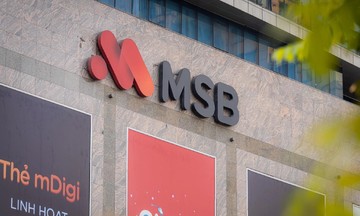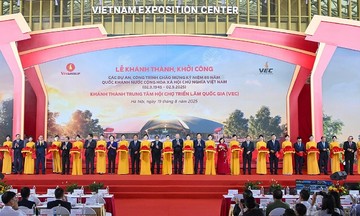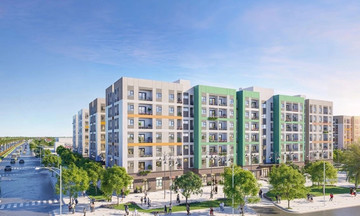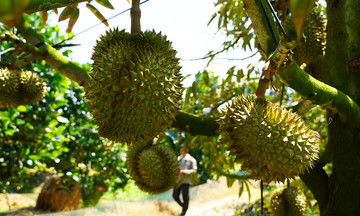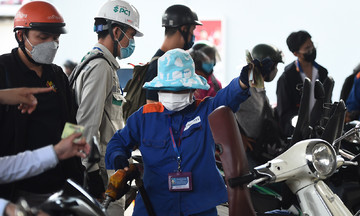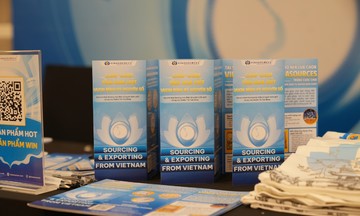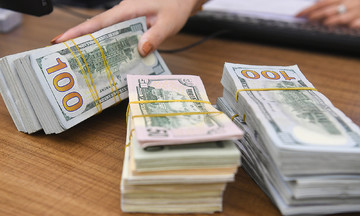In Directive 20 on environmental pollution, Prime Minister Pham Minh Chinh mandated Hanoi to pilot a ban on single-use plastics in restaurants, hotels, beverage shops, and eateries within the city's first ring road. The pilot program will begin in the fourth quarter of this year and expand in subsequent years.
A VnExpress survey of cafes in Thanh Xuan, Cau Giay, and Ba Dinh districts (Hanoi) revealed that many establishments serve dine-in customers drinks in single-use plastic or paper cups with straws and spoons. Takeaway orders include additional plastic handles or bags.
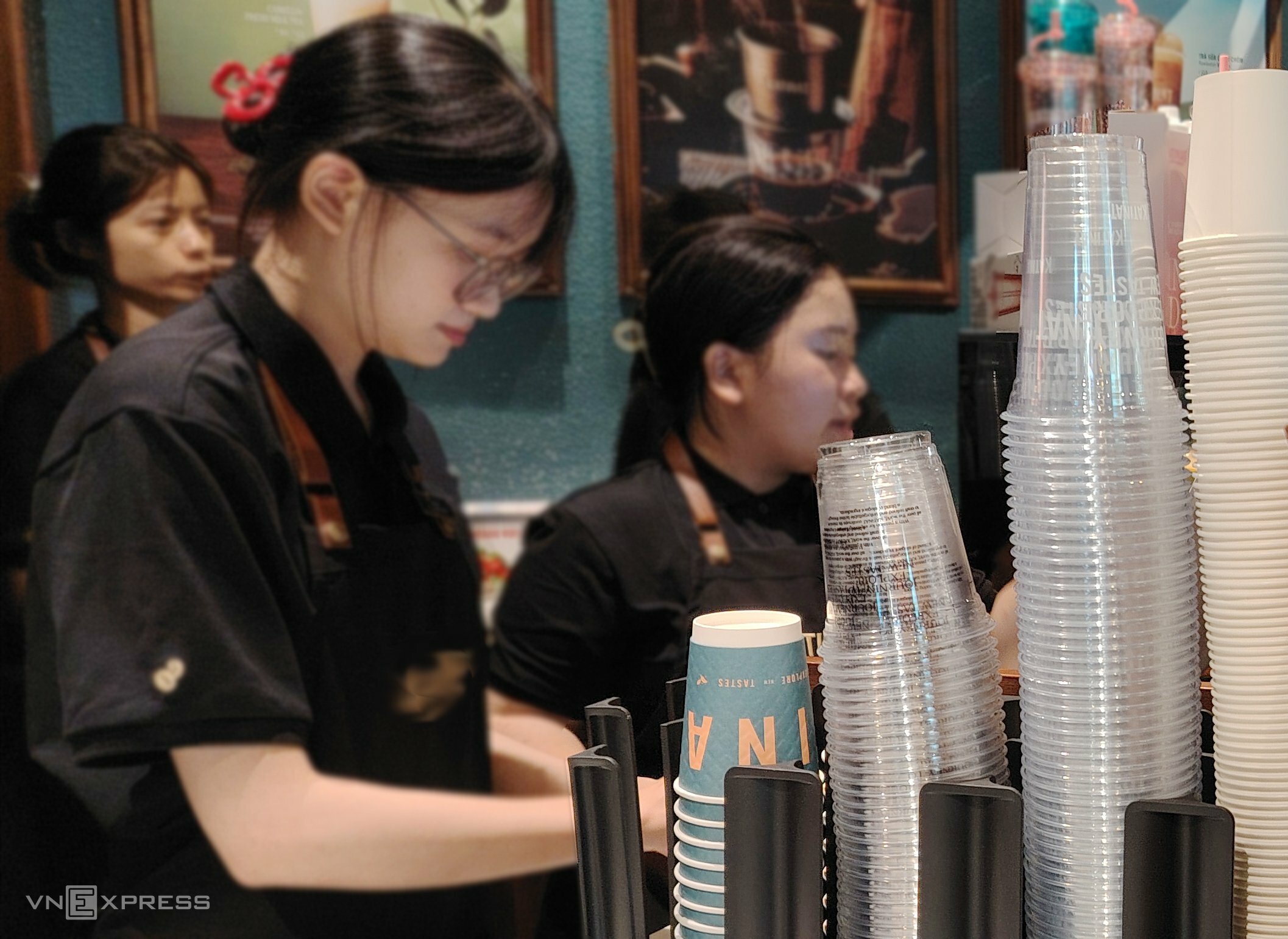 |
The ordering counter at an F&B establishment on Phan Dinh Phung Street, Hanoi, 18/7. Photo: Thuy Truong |
The ordering counter at an F&B establishment on Phan Dinh Phung Street, Hanoi, 18/7. Photo: Thuy Truong
At a busy cafe on Pham Van Bach Street (Cau Giay), observations during a 30-minute peak morning period showed approximately 100 drinks served in predominantly plastic cups to customers and delivery drivers.
These cups and plastic bags contribute to the 1,400 tons of plastic waste Hanoi generates daily. According to the Hanoi People's Committee (HPC), 60% of this waste consists of single-use plastics and bags. Only 20% of collected plastic is recycled, mostly by small, informal workshops around the city, primarily focusing on bottles for water, shampoo, and shower gel. Plastic bags and other items are largely discarded in landfills.
Plastics are generally categorized into seven types, marked with Resin Identification Codes 1 through 7, printed on the bottom of products.
 |
Plastic classification chart by resin code. Graphics with AI support |
Plastic classification chart by resin code. Graphics with AI support
Specifically: 1 - PET (Polyethylene Terephthalate) is common in water and beverage bottles; 2 - HDPE (High-Density Polyethylene) is used in milk and cooking oil bottles and household products; 3 - PVC (Polyvinyl Chloride) is a soft plastic used in products like pipes and phone cases; 4 - LDPE (Low-Density Polyethylene) is used in plastic bags and food wrap; 5 - PP (Polypropylene) is used in food containers, baby bottles, and cups; 6 - PS (Polystyrene) is used in cups and foam containers; and 7 - Other (Miscellaneous) denotes mixed plastics.
PET, HDPE, LDPE, and PP are easily recyclable into products like t-shirts, containers, and bottle caps. PVC, PS, and other mixed plastics are typically difficult to recycle and process.
The types of single-use plastics used by cafes also vary. For cups, large tea and coffee chains often use PET, while some use PP (a more opaque plastic). Many smaller roadside cafes and juice shops use PP or a clear plastic without clear resin identification markings.
According to Hunufa Co., Ltd., a packaging manufacturer, PET plastic costs three times more than PP but is favored by cafes and restaurants for its clarity, which showcases the drink's ingredients. Both materials are easily collected and recycled.
Plastic bags, however, often end up in landfills. Made from HDPE and LDPE, valuable plastics derived from petroleum, they are lightweight and easily contaminated after use. Waste collectors rarely gather them, as it takes dozens of bags to equal the value of a single shampoo bottle, also made from HDPE. These petroleum-based plastics decompose slowly in water, soil, or landfills.
Plastic pollution is a major challenge for many countries, including Vietnam. Improperly managed plastic waste pollutes land, air, water, and lake, river, and ocean sediments, eventually entering the human food chain.
Even before the Prime Minister's directive, many F&B establishments recognized the plastic problem and began transitioning to alternatives. Hoang Tung, Chairman of F&B Investment, which owns six Pizza Home and Com ga 68 restaurants, explained that their takeaway packaging typically includes cups, lids, straws, boxes, plastic bags, and cutlery. They have already switched to paper boxes and wooden spoons and forks.
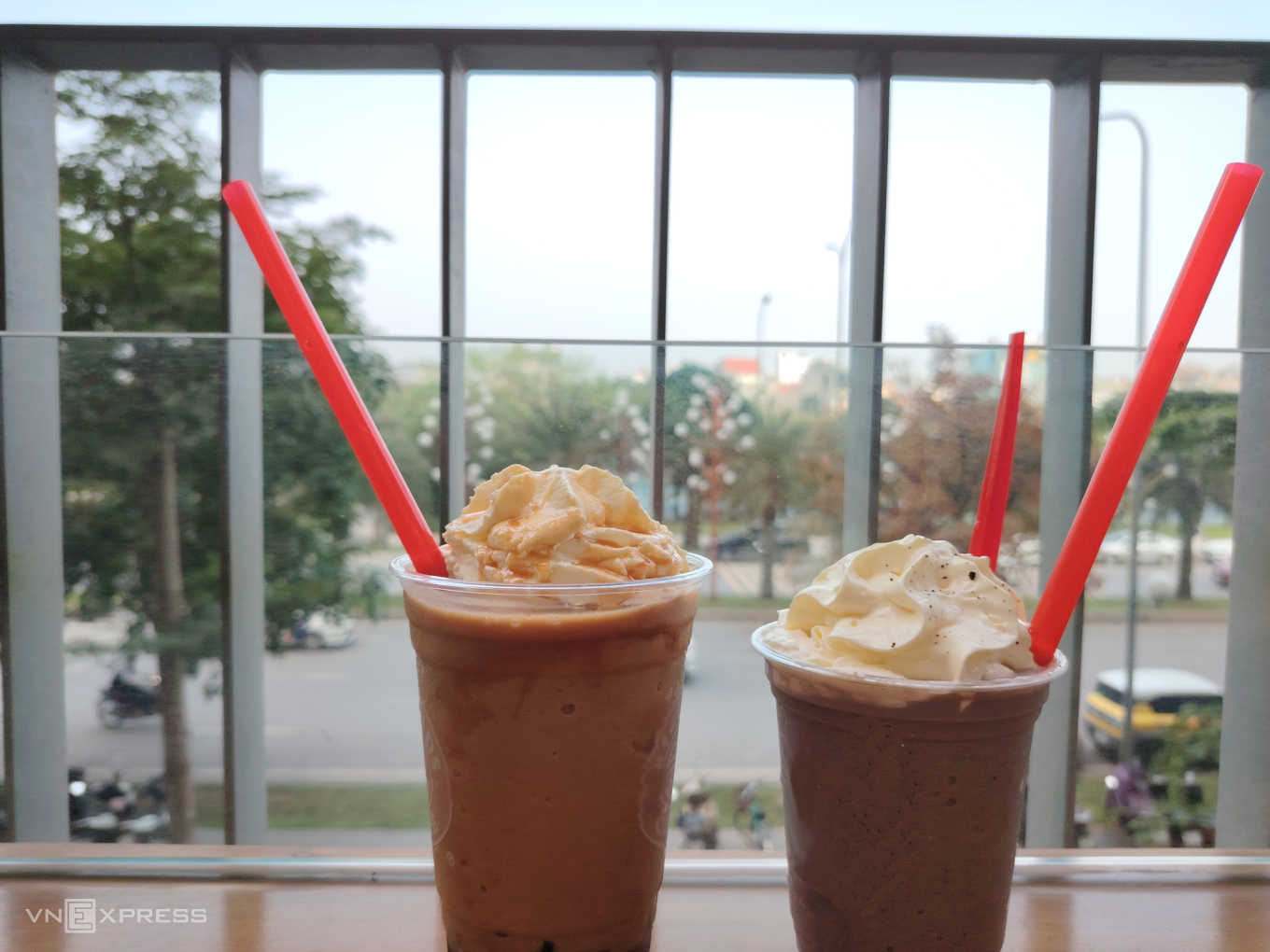 |
A cafe serving drinks in plastic cups with straws and spoons in Tay Mo, Hanoi, 29/4. Photo: Bao Bao |
A cafe serving drinks in plastic cups with straws and spoons in Tay Mo, Hanoi, 29/4. Photo: Bao Bao
However, the transition faces challenges due to the higher cost of alternatives. Wooden cutlery is four times more expensive than plastic, and a set of biodegradable plastic cups and lids (360 ml) costs over 2,000 VND, twice the price of PET and seven times the price of PP. Cheaper plastic cups are readily available on the market, further complicating the issue, especially as each establishment serves hundreds of orders daily.
Furthermore, the quality of some alternatives doesn't match plastic. Tung noted that paper straws become soggy and clogged with prolonged use, and paper bags lack the strength of plastic, especially for deliveries.
Some cafes have tried using paper bags for deliveries, but condensation from cold drinks weakens the bags, leading to tears. Biodegradable plastic bags offer another alternative, but their durability is subpar.
One Kitchen and the Ka... coffee chain face similar challenges. While using paper boxes, cups, and bags, One Kitchen still relies on plastic outer bags. Vu Truong Giang, founder of Ka..., said they haven't found a suitable replacement for plastic bags for takeaway orders, despite easily switching from plastic to paper cups.
A Hunufa Co., Ltd. executive admitted that fully biodegradable plastic bags (different from those made from bioplastics mixed with petroleum-based plastics) aren't yet a viable replacement for non-biodegradable plastics, despite costing 5-7 times more. Due to slow-moving inventory, they halted production unless they receive specific orders.
"We are researching ways to reduce costs and improve the convenience of environmentally friendly products to make them more comparable to plastic," said Nguyen Hong Vu, General Director of Hunufa.
He emphasized that the transition requires time. "Plastic alternatives will only truly breakthrough when they offer a sustainable solution in terms of price and convenience," he stated.
Thuy Truong



